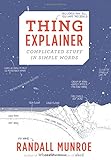
Main Content
Benefits of video: breaks up a dry lesson, provides visual and sound stimulation
Cons of video: hard to find a great video, it takes time to set up video, sound, projector
Roger’s 3 Ss to help you remember:
S-search: searching for good video
S-setup: setup the video before
S-sustain: can the video be used again
Emily’s advice
Search: decide the goal of the lesson and how the video should fit in the lesson. She looks for videos made by other students on YouTube because of simplistic language, TED.org, NPR.org (Roger suggests teachertube.com, academicearth.org, Open Courseware: ocw.uci.edu), don’t need to show the entire video (Roger: can just show 1 minute and show it multiple times)
Setup: Create a document that provides links of videos that can be continuously updated and accessible, give the video links to students
Sustain: Have a video archive (continue to next podcast for Part 2)
What's In My Bag?
Emily: Ginger candy from Trader Joe's 'Ginger People' brand at traderjoes.com
Roger: Business Cards from Moo.com












